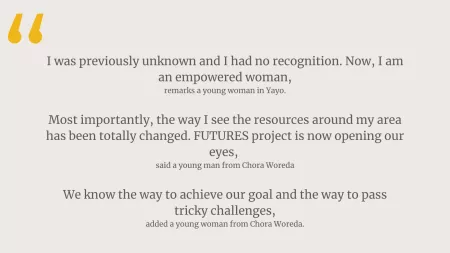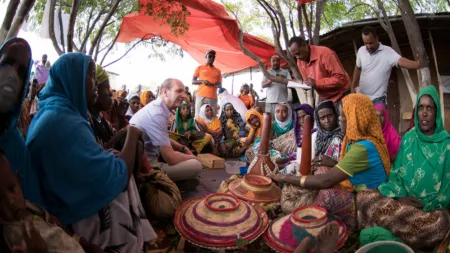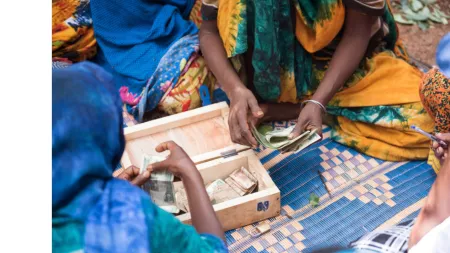Listening to people’s own descriptions of the changes they experience in a project is always one of the most telling ways to think about the impact we contribute to in the world. It always highlights the kinds of shifts that are possible beyond numbers and into changes that last for a lifetime, and even for generations. Earning money, growing food, accessing health services—those are all critical in our lives, and the Ethiopia FUTURES project supported all of those. But what might be less obvious is how it changes the way people think about themselves, their options, and their futures. But here are a few quotes where people illustrate that change in their own perceptions of the world:

The My Forest, My Livelihood, My Family (FUTURES) project runs in the Yaya Coffee Forest Biosphere Preserve in Ethiopia’s Oromia region, with $2.6 million funding from the Packard Foundation. It has reached 15,870 people since 2020, in partnership with Oromia Development Association, Environment and Coffee Forest Forum, and Kulich Youth Reproductive Health and Development Organization.
What changed?
- People have better livelihood opportunities. Overall, the change people mentioned most often was that they have better, more diverse opportunities to make a living. One government official says “From my perspective, the most significant change in the communities served by the project is the saving culture developed by women through Village Savings and Loan Associations (VSLAs), and the associated livelihood improvement or job creation for both women and the youth groups.” A young man in the program says, “I bought a cow and 200 square meters of land on the roadside. My cow gave a calf and my children are drinking milk today. This was unthinkable without the FUTURES project.”
- People change the way they think about opportunities. One man says, “Most importantly, the way I see the resources around my area has been totally changed. What I now understand is that there are many more opportunities to improve the livelihood of people in our area if everyone opens their eyes.”
- Women are taking on more leadership roles. “I was previously unknown and I had no recognition either by the kebele administration or others. Currently, I am the facilitator of women's groups in this area. Now, I am an empowered woman thanks to the FUTURES project!”
- People are more likely to use family planning. One health worker says, “Yes, I have seen increased demand for family planning and reproductive rights services. For example, the adoption of long-acting contraceptive methods has increased quite a lot."
- Governments and communities are more likely to collaborate with each other. In the words of the local government, "The cross-sectoral collaboration and coordination have enabled us to fill some of the existing gaps (for example, in relation to budget deficit) we have in our sectors. It made us more efficient by coordinating and integrating activities.”
- Men are changing their attitudes towards gender equality. As one man says, “In our community, there is also a change in the attitudes of husbands because of the change that the women are showing in their livelihood.” A young woman says she sees men change their attitudes because “Women’s empowerment enables all the households to participate in the business that can uplift their life from poverty.”

How did it happen?
- Savings groups as an entry point. Most people point to VSLAs and Youth Savings and Loan Associations (YSLAs) as the key entry point for the rest of project activities. FUTURES set up 185 savings groups with 3,754 members. Collectively, those groups have saved 2.5 million Ethiopian Birr (about $45,000 USD).
- Get health centers to serve youth differently. The project provided counselling for more than 14,000 youth on reproductive health, including setting up private spaces for adolescents to access health services. It also trained 28 health care providers in youth friendly services.
- Promote collaboration across sectors, even the ones you wouldn’t expect. The project deliberately integrates across health, agriculture, forestry, climate, and gender equality, and works with the local government to do the same. As one young man describes it, “A team including NRM, health, and administration came one day to visit the potato farm. The messaging was integrated. HEWs [Health Extension workers], DA [District Agriculture], NRM [Natural Resources Management] speak the same language in an integrated way.” That’s a lot different than other projects that the participants have worked on.
- Build links to markets. Helping people find ways to sell their produce and increase incomes has made a big difference for participants. “I have been participating in this seedling production consecutively for the last few years. However, there was no market for the seedlings. After the FUTURES project came to our kebele, I got the market through the project and sold all that I had last year.”
